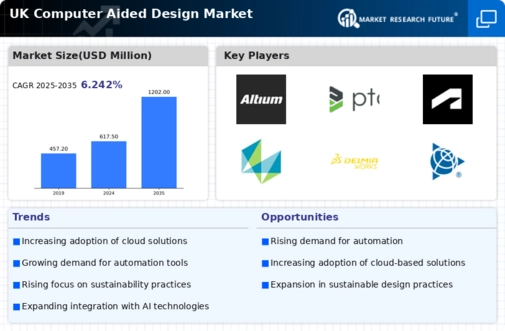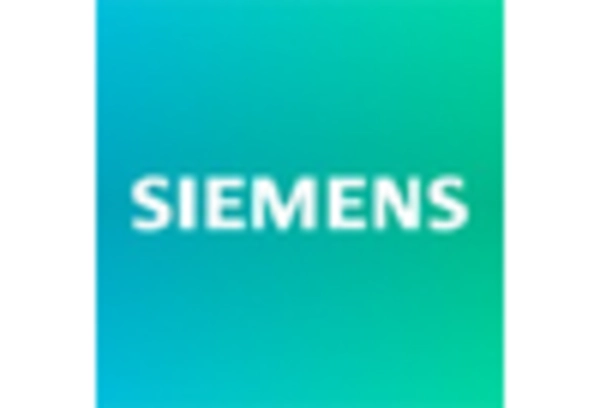Growing Demand for Customization
Customization is becoming a pivotal driver in the computer aided-design market, as clients increasingly seek tailored solutions to meet specific needs. This trend is particularly evident in sectors such as manufacturing and product design, where bespoke designs can significantly enhance product appeal. In the UK, The market for customized design solutions has expanded, with reports indicating a growth rate of approximately 15% per year. This shift towards personalization necessitates advanced CAD tools that can accommodate unique specifications and variations. Consequently, the computer aided-design market is likely to see a surge in demand for software that supports flexible design options, thereby fostering innovation and creativity.
Focus on Training and Skill Development
As the computer aided-design market evolves, there is an increasing emphasis on training and skill development for design professionals. The rapid pace of technological change necessitates that designers stay updated with the latest CAD tools and techniques. In the UK, educational institutions and industry organizations are responding by offering specialized training programs aimed at enhancing CAD proficiency. This focus on skill development is crucial, as it ensures that the workforce is equipped to leverage advanced design technologies effectively. Reports indicate that investment in training programs has risen by 10% in the last year, reflecting the growing recognition of the importance of skilled professionals in driving the computer aided-design market forward.
Technological Advancements in CAD Software
The computer aided-design market is experiencing rapid technological advancements, particularly in software capabilities. Innovations such as parametric design, 3D modeling, and real-time rendering are enhancing the efficiency and accuracy of design processes. In the UK, the adoption of advanced CAD tools has increased by approximately 25% over the past two years, driven by the need for more sophisticated design solutions. These advancements not only streamline workflows but also enable designers to create more complex and detailed models. As industries such as architecture and engineering increasingly rely on these technologies, the demand for cutting-edge CAD software is likely to grow, further propelling the computer aided-design market.
Rise of Remote Work and Digital Collaboration
The shift towards remote work has transformed the CAD market. As teams increasingly collaborate digitally, the need for effective CAD solutions that facilitate remote access and teamwork has surged. This trend is particularly relevant in the UK, where many design firms are adopting cloud-based CAD tools to enhance collaboration among geographically dispersed teams. The market for collaborative CAD solutions is expected to grow by approximately 30% in the coming years, as firms seek to improve efficiency and communication. This evolution in work practices is likely to drive innovation within the computer aided-design market, as software developers respond to the demand for more integrated and user-friendly platforms.
Increased Investment in Infrastructure Projects
The UK government has committed substantial funding towards infrastructure projects, which is positively impacting the computer aided-design market. With initiatives aimed at modernizing transport, housing, and public facilities, the demand for CAD solutions is expected to rise. Recent data suggests that infrastructure spending in the UK is projected to reach £100 billion by 2026, creating a robust environment for CAD applications in planning and execution. As architects and engineers utilize CAD tools to design and visualize these projects, the computer aided-design market stands to benefit significantly from this influx of investment, potentially leading to a market growth of 20% over the next few years.

















Leave a Comment